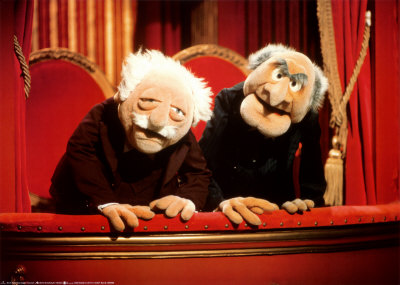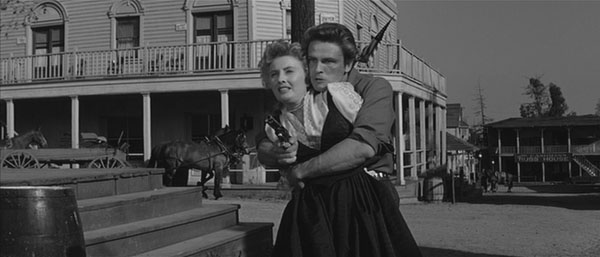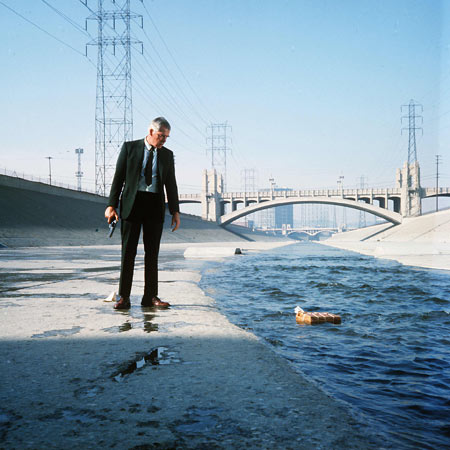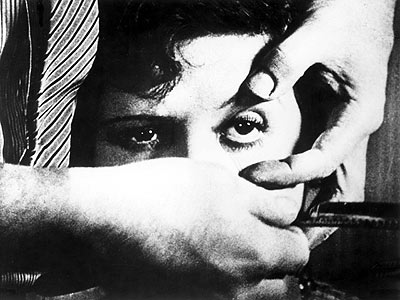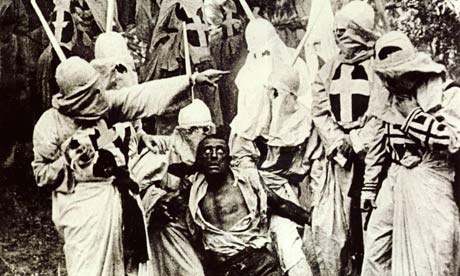
By Eric Jessen 9/18/09
I thought I'd never watch
The Birth of a Nation again. Not because I couldn't or because I didn't want to, but because I thought I wasn't supposed to. When I first watched it, I had read a lot about it beforehand so I was properly prepared. In fact my first reaction was that it didn't live up to its racist lore. My first viewing of “Birth” was just to soak in its lurid stench. I couldn't fully grasp that I had experienced what James Agee called “the beginning of melody, the first eloquence of language, the birth of an art.” So when I slouched into my uncomfortable desk with its wobbly back, forced to watch “Birth” for a second time for my “History through the Hollywood Lens” class, I felt privileged. I was glad to be given the chance to watch it again and really
study it. (I wondered if anyone, other than its fans of the early 1900's, has actually seen this movie more than once. Who would dare watch it a second time? The first time you watched merely for “academic purposes.” But a second time must mean you
liked it.)
I also felt giddy at the opportunity to gauge the initial reaction of a class of “Birth” virgins. I sized them up immediately: smart kids hiding a slam-bang, CGI, “Princess Bride” temperament, probably considering “Shawshank” their favorite “art film.” I stirred in my desk, eager, as the most vile scenes approached, expecting my classmates to be shocked and appalled. I expected them to cringe at the hokey racism: the ghastly make-up, white actors in blackface, foaming at the mouth with beastly lustfulness over the saintly Lillian Gish. To my surprise they acted quite mature. They swallowed “Birth's” fiery bigotry with chilling composure. I didn't hear a single gasp. Instead they turned their noses up at “Birth,” disapproving of Griffith's execution and film-making as much as his racism. They called the movie “boring,” the acting of Gish and Mae Marsh “awful,” and Griffith's direction and specifically his editing “horrible.” But when the movie ended, the class let out a loud exhale like they had just survived a gauntlet. They then applauded themselves, proud to have not fainted or fallen asleep.
I sat at my crappy desk but felt like I was perched atop a giant pedestal made of thousands of DVD rentals. I certainly considered myself the most qualified navel-gazer in the room for having previously sat through Griffith's
The Birth of a Nation, his three hour extravagant mess
Intolerance and his film
Broken Blossoms. I watched, calm and still, searching for reasons to crown “Birth” an offensive masterpiece, while arrogantly looking down on my classmates for not being experts on the craftsmanship of Griffith. I recited in my head everything I had read about Griffith the
auteur, and
Birth of a Nation. In
Agee on Film, James Agee called the battle charge in “Birth,” “the single most beautiful shot I have seen in any movie.” President Woodrow Wilson said Birth of a Nation is “like writing history with lightning.” Griffith's wife wrote in her book
When the Movies Were Young, (written in 1925), that “Birth” shows “the stuff its citizens were made of and the reason why this nation has become such a great and wonderful country.” I also remembered what Pauline Kael wrote about Griffith's style and his two favorite actors: Gish and Marsh. In Kael's book
Going Steady (one of my favorite books of criticism) reviewing
Intolerance she wrote, “One can trace almost every major tradition and most of the genres, and even many of the metaphors, in movies to their sources in Griffith.” She described Gish as “a frail, floating heroine from romantic novels and poems – a maiden” and Marsh as “our dream not of heavenly beauty, but of earthly beauty.”
I felt like I was watching “Birth” the second time partially through the eyes of Agee, Kael, and Mrs. Griffith. Considering their respect for Griffith's movie making craft, I tried to watch “Birth” as attentively as possible. What I found most striking was his ability to delicately balance huge, marvelous battle scenes with small charming scenes that accentuate the elegance of Gish and the dorky enthusiasm of Marsh. Contrary to what my classmates said, I found
Birth of a Nation very watchable. It moves with a sense of purpose (maybe not the most honorable one). Griffith cuts smoothly from the Cameron family in the South to the Stoneman's in the North. And his big production, his thousands of extras, and the giant battle scenes don't bog down his story. He builds suspense masterfully, especially in the scene near the end when the KKK is riding to save the innocent whites from the black Union soldiers (as ridiculous as that sounds).
I didn't find
Birth of a Nation boring at all. Dare I say I found it strangely entertaining. But I can't blame my classmates for their point of view. (I reacted about the same way the first time I watched “Birth.”) And though some of the battle scenes are extraordinary and some of the close-ups of Gish and Marsh are beautiful, they are overshadowed by the film's later scenes of racism. The scenes of black legislators cooling their stinky bare feet on their desks and sloppily eating chicken wings during session are obscenely silly. Though the first half of
Birth of a Nation is mostly crude-free, the second half is despicable. It's bawdy blackface for the dim-wit-KKK-redneck trade. In watching some of the later scenes, I gathered that D. W. Griffith is either virulently racist and manipulative or oblivious and hopelessly stupid.
Racist and disgusting, unbearably boring or not,
Birth of a Nation is an important part of film history. To ban it completely or to chop it up into little bits like once suggested would be to deny cinema its roots. And we can't ignore the fact that D.W. Griffith the
auteur and the apparent racist was a pioneer of film making and story telling. “Birth” is also a unique snapshot into the mind of the white southerner of the early 20th century. It was the biggest hit in history until
Gone with the Wind, and decades later many people still believed it was the greatest film of all time.
Boring, awful, horrible, offensive, despicable, vile, disgusting, obscene, crude, ugly, lurid.... I think I could watch it again.
